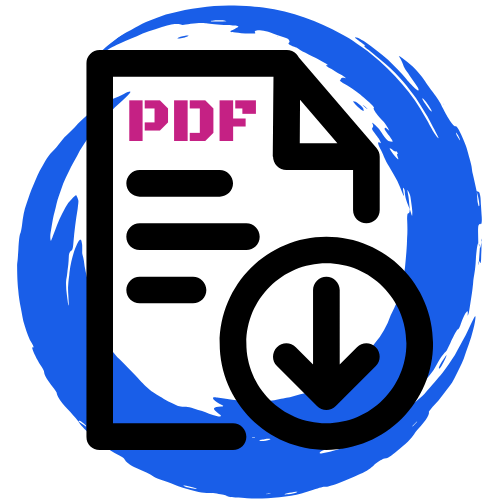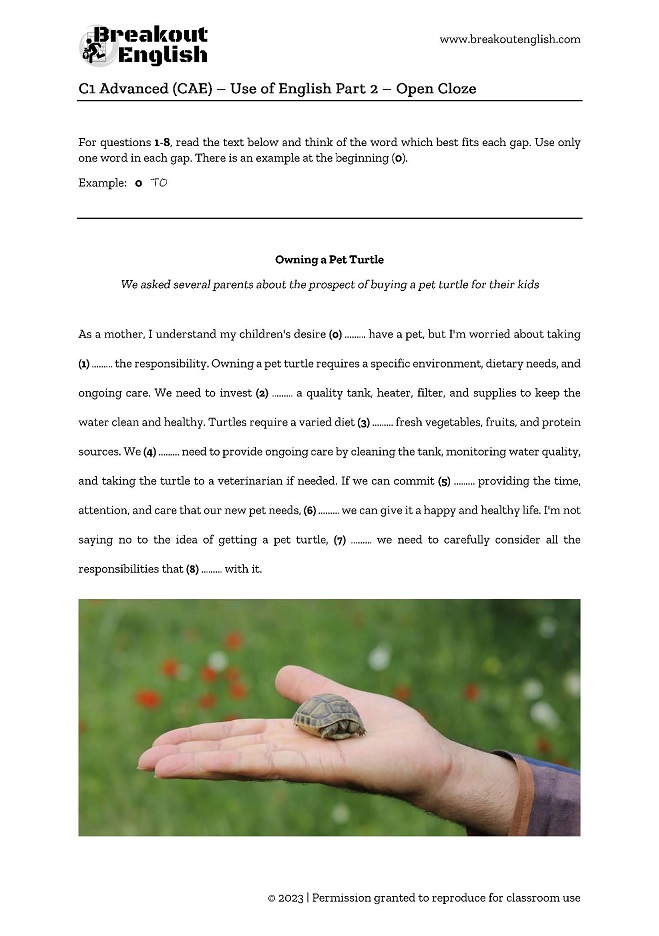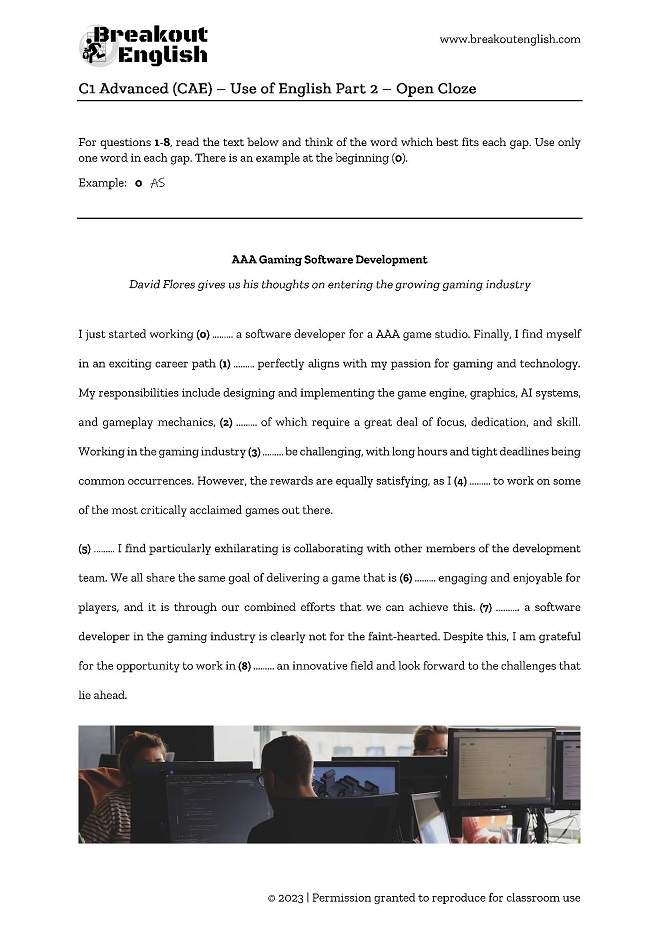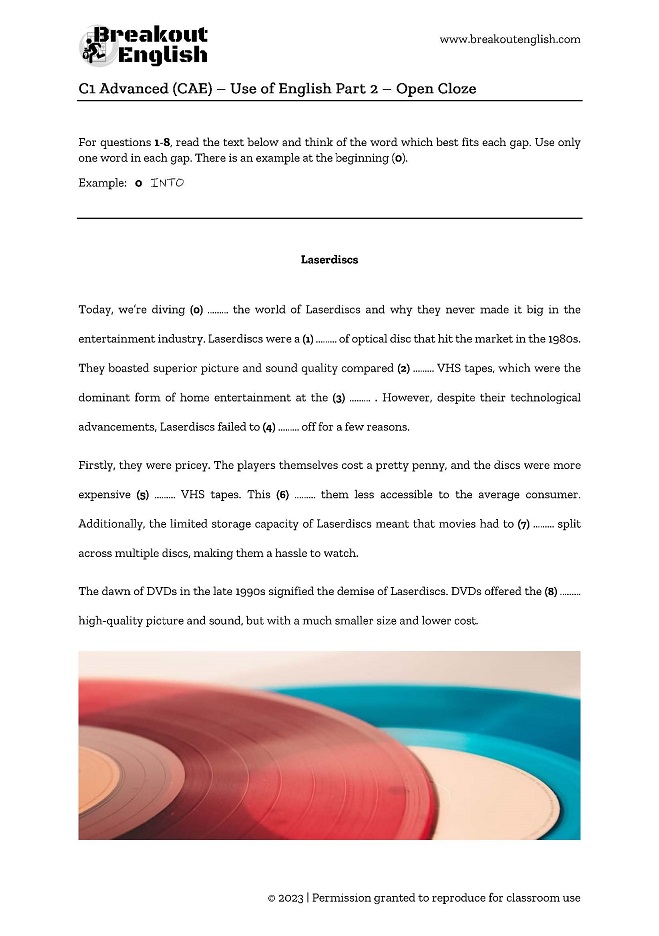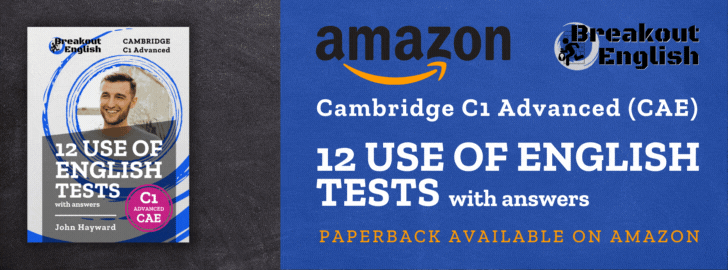C1 Advanced (CAE) Use of English Part 2 is also known as the Open Cloze task. It consists of a short text of approximately 100-150 words, which has had nine words removed and replaced with a gap, one example and eight questions. The gap must be filled with only one word. You are not given any options. Sometimes, there is more than one possible answer, but you only need to provide one. CAE Use of English Part 2 is notoriously difficult because it feels like there are millions of possibilities for the missing words. Let’s focus on the specific parts of speech with examples which are removed from an open cloze text and analyse them. Then, we’ve got three CAE Use of English Part 2 practice tasks to use at home or in the classroom. If you are looking for a more complete overview of the entire Use of English test at C1 level, check out our complete guide.
12 USE OF ENGLISH TESTS with answers – C1 Advanced (CAE)
Think about picking up a copy of 12 Use of English Tests, which has practice exams for parts 1-4 of the Use of English test in order to improve your grammar and vocabulary skills. It comes with answers for self-study or to be used in the classroom.

Contents
Parts of speech with examples
Before delving deeper, it is important to understand what parts of speech are. Parts of speech are broad categories that are used to classify words based on their function in a sentence. Since the ancient Greeks, academics have analysed speech and attempted to categorise words into groups. There are traditionally considered to be eight parts of speech in English:
- Nouns: Nouns are words that refer to people, places, things, or ideas. Examples of nouns include “book,” “cat,” “friend,” and “love“.
- Pronouns: Pronouns are words that take the place of a noun in a sentence. Examples of pronouns include “he,” “she,” “it,” “they,” and “we.”
- Verbs: Verbs are words that express action or state of being. Examples of verbs include “run,” “swim,” “eat,” and “sleep.”
- Adjectives: Adjectives are words that describe or modify nouns. Examples of adjectives include “happy,” “green,” “large,” and “delicious.”
- Adverbs: Adverbs are words that describe or modify verbs, adjectives, or other adverbs. Examples of adverbs include “quickly,” “happily,” “very,” and “sometimes.”
- Prepositions: Prepositions are words that indicate the relationship between two words in a sentence. Examples of prepositions include “on,” “in,” “at,” “to,” “for,” and “with.”
- Conjunctions: Conjunctions are words that connect words or phrases within a sentence. Examples of conjunctions include “and,” “but,” “or,” and “so.”
- Interjections: Interjections are words or phrases used to express emotion or sentiment. Examples of interjections include “oh,” “wow,” “ouch,” and “hey.”
By understanding the different parts of speech, you can learn how words work within a sentence and how they are used to convey meaning. This understanding is crucial for identifying function words in a text and using them correctly.
Function words vs content words
Function words connect the language together. They are the glue that binds content words and expresses grammatical relationships within a sentence. However, unlike content words, function words do not convey significant meaning on their own. This is why they often go unnoticed. Here is a list of function word categories. These can be entire parts of speech as seen above, or a subcategory within a part of speech.
- Prepositions: Prepositions form a relationship between words in a sentence, often as part of a prepositional phrase. Examples of prepositional phrases include “on the table,” “in the house,” and “at the park.”
- Conjunctions: Conjunctions can connect ideas and phrases rather than simply individual words. For example, “I like cars, but my brother likes trucks.”
- Articles: Articles are words that come before a noun to indicate whether the noun is specific or general. “A” and “an” are indefinite articles, while “the” is a definite article. For example, “A dog” refers to any dog, while “The dog” refers to a specific dog.
- Pronouns: Pronouns are words that take the place of a noun in a sentence. Examples of pronouns include “he,” “she,” “it,” “they,” and “we.” For example, instead of saying “Arthur went to the store,” you could say “He went to the store.”
- Auxiliary verbs: Auxiliary verbs are used to form verb tenses, as well as to make questions and negative statements. Examples of auxiliary verbs include “be,” “have,” “do,” and “will.” For example, “I have been studying for two hours.“
- Particles: Particles are grammar words that don’t fit into the traditional eight parts of speech. They include the use of “to” as an infinitive marker, “not” to form negatives and, most often, as part of a phrasal verb. For example, “I turned off the lights.”
- Determiners: Determiners go before nouns and clarify what they refer to. They can indicate possession like “your” or “her“. They can indicate quantity “many“, “some” or “plenty“. Determiners also include demonstratives, “this“, “that“, “those“. for example, “These grapes are delicious!“
- Modal verbs: Modal verbs do contain meaning of their own, but they can also act as auxiliary verbs in a sentence. They include common verbs like “can“, “would“, “may” and “should“. For example, “He may not come back after such a bad experience“
Take a look at the difference between function words and content words in this famous quote:

It is essential to understand the role of function words in English, as they play a crucial role in constructing meaningful sentences. However, identifying and using function words can be challenging for non-native speakers. Therefore, it is crucial to practise with different exercises to become more familiar with function words and their usage in context.
Function words in CAE Use of English Part 2
Cambridge Advanced (CAE) Use of English Part 2 focuses entirely on function words. Cambridge calls it a focus on grammar or lexicogrammar. This means that the words are either purely grammatical in use, such as articles, pronouns and auxiliary verbs, or they are a mix, such as modal verbs, particles of phrasal verbs or words from fixed expressions. Knowing the way sentences are constructed and the way words are used goes a long way when completing a CAE Use of English Part 2 task.
Take a look at the quote above with one of the function words removed.
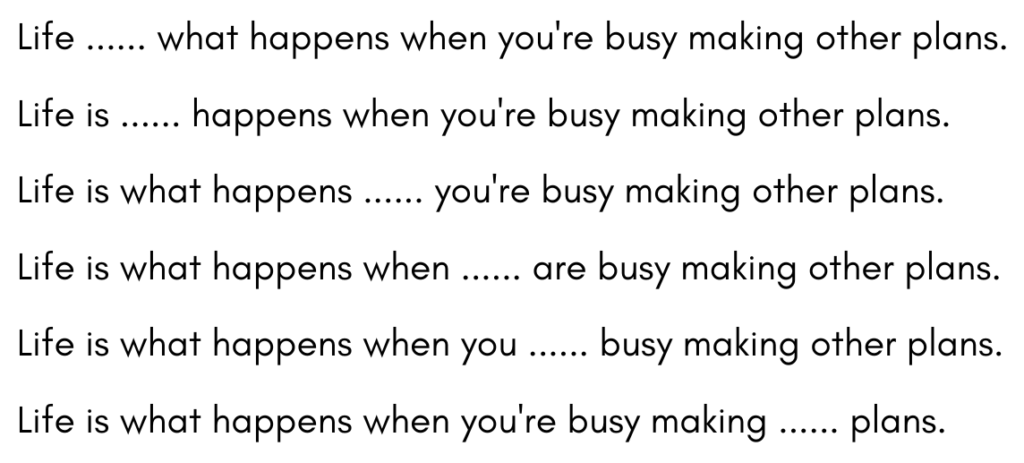
Any one of these words is a candidate for removal to create an open cloze task. However, some would make the test more or less difficult. For example, removing the auxiliary verb “are” as part of a present continuous construction is quite an easy option. A B1 or B2 student would be expected to know that grammar, so for a C1 level exam, it wouldn’t be an option. Removing the determiner “other” or the pronoun “you” aren’t options either because there are too many other possibilities which would change the meaning of the sentence. However, removing the conjunction “when” or the pronoun “what” are much more likely candidates.
The materials
To improve at CAE Use of English Part 2, it’s essential to focus on grammar and vocabulary. Pay attention to the auxiliary verbs and other components of grammar lessons. But even more importantly, when learning new vocabulary, make a note of the prepositions, articles or other words that form part of the lexical chunk. Words don’t exist in isolation and Cambridge loves testing things like phrasal verbs and fixed expressions.
These three CAE Use of English Part 2 tasks are a way to get started with your practice in this part of the exam. You’ll probably need a lot more before it’s over. Consider our book 12 Use of English Tests for the C1 Advanced exam for a more complete offering of all the parts of the Use of English.
EXAM PART: C1 Advanced (CAE) Use of English Part 2 – Open cloze
EXAM SKILLS: Grammar and lexicogrammar, function words
TIME: 5-10 minutes per task
PREPARATION: One copy of the worksheet per student
Download
